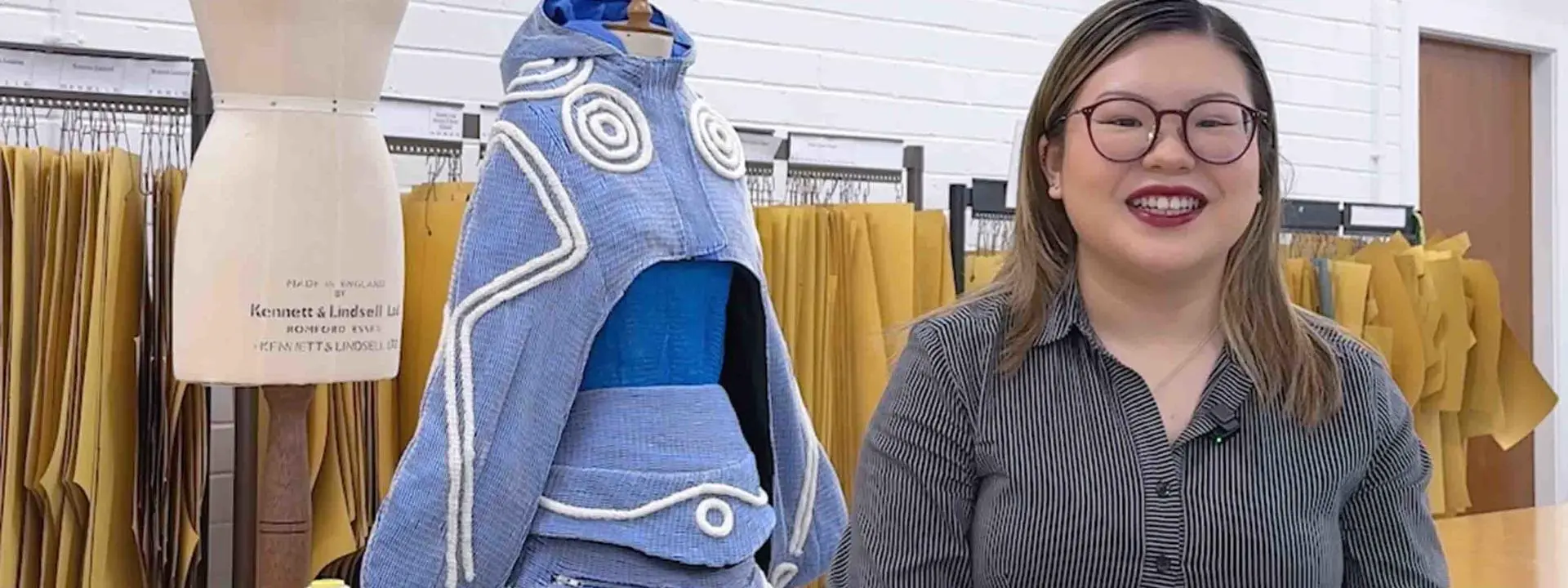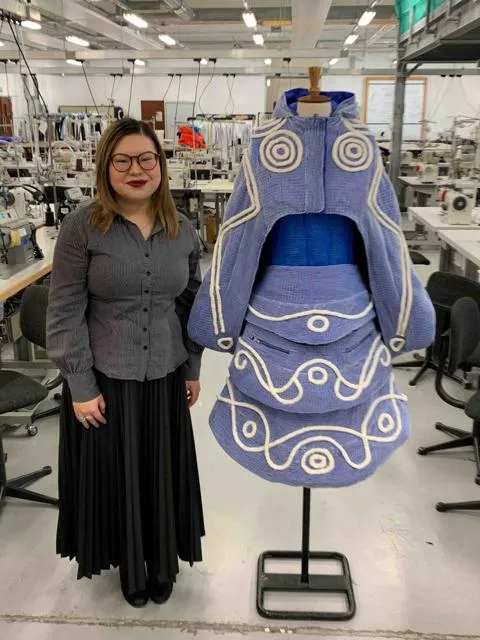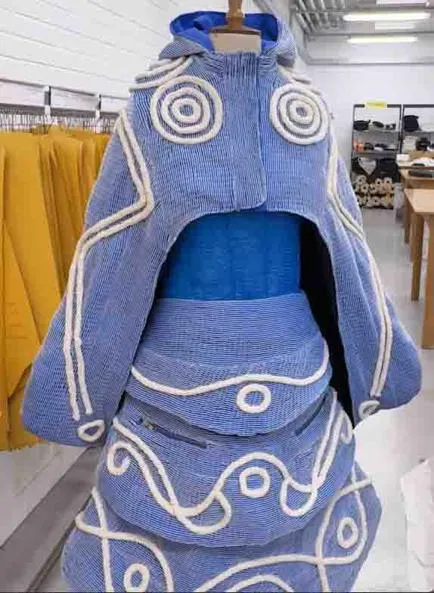Ancient Picts and meat packaging inspire one-off fashion showpiece

A design student at Heriot-Watt University has created a truly unique outfit through an unlikely fusion of ancient Pictish symbols and meat netting.
Verna Lai who is about to enter her final year for a Bachelor of Arts in Fashion at the School of Textiles and Design (SOTD) in the Scottish Borders, took inspiration from Scotland’s past to tailor a three-piece matching outfit consisting of a cape, skirt and tank-top, predominately made from meat netting.
Sometimes known as ‘butcher’s netting’, the product is commonly made from a warp-knitted synthetic material and often incorporates natural rubber to enhance elasticity. It is used to maintain the shape of roasts or other cuts of meat such as pork loin, turkey breast, or beef roast, while they cook.
It was a huge challenge but you never really learn if you don’t challenge yourself.
It is a far cry from the materials Verna typically uses. She worked tirelessly over three-weeks, relying on a mixture of techniques learnt through her studies, to bring her design to life.
“It was a huge challenge but you never really learn if you don’t challenge yourself,” said Verna.

Based in the Glasgow suburb of Robroyston, Verna became involved in the project after Scobie & Junor, a food packaging supplier, approached the University to commission a dress made from meat netting, one of its most popular products sold to companies around the UK and Europe.
A total of six-students put pen to paper and submitted their designs to the company. But it was Verna’s eye-catching vision that had the greatest impact on judges who were impressed by her use of Pictish monograms and nod to Scottish heritage.
Verna explains: “My outfit has a lot of Scottish cultural inspiration. I was looking at Pictish monograms, which are unique to Scotland, and was able to include them in my design using meat netting tubes.
“This impressed the company who wanted the heritage link but also seemed to like the techniques I would need to use in order to deliver the design.”
The outfit is made from around 60 metres of meat netting that was carefully hand and machine stitched by Verna.
All three garments were recently unveiled by Scobie & Junor as its showpiece exhibit in Frankfurt, Germany during the world’s largest trade fair for the meat packaging industry, the IFFA.
“It was an incredible relief to hand over the ensemble once it was finished,” continues Verna.
“After a couple of days, I started to feel really proud of what I had achieved in such a short space of time and to overcome so many challenges.
“I remember, for example, when I realised how difficult it was going to be using meat netting as a material, and for some of the outfit, I would need to hand stitch, taking up so much time when I also had to juggle my studies. I just cried.
“But then you see the garments come together and what I created pretty much was what I planned from the start.
“That’s always the goal when you start to create something.”

Providing support to Verna throughout the challenge was her academic supervisor, Dr Danying Yang.
The Assistant Professor in Fashion and Fashion Technology at the SOTD praised Verna for her hard work and creativity saying: “It was a pleasure to support Verna throughout this unique and ambitious project. She demonstrated exceptional creativity, resilience, and technical skill, transforming an unconventional material into a fashion piece that is both cohesive and rich in cultural reference.
“Verna approached every challenge with determination and clarity of vision, applying the techniques she has learned with ingenuity and purpose. Her ability to reimagine a functional product like meat netting into meaningful and visually striking garments is a powerful example of what we aim to nurture at the School of Textiles and Design. I’m incredibly proud of what she has achieved.”

Scobie & Junor now intend to exhibit the garment at the main entrance of its headquarters in East Kilbride.
Simon Moorhouse is a Marketing Executive at Scobie & Junor. He said: “This collaboration with Heriot-Watt University has been a brilliant opportunity to support emerging talent while reimagining our products in a completely new light.
“Seeing our meat netting transformed into a striking fashion piece has been both inspiring and thought-provoking. It’s a testament to the creativity of the next generation of designers and a reminder that innovation often comes from the most unexpected places.”
The Picts lived in northern and eastern Scotland from approximately the 4th century AD to the 9th century AD. They eventually disappeared from written records in the 9th century but their influence continues to this day through their lasting artistic, cultural, and linguistic legacy.
Heriot-Watt’s celebrated School of Textiles and Design is a centre of excellence located in the heart of the Scottish Borders. It attracts talented students from across the world, offering a range of design, fashion and textiles focused programmes.
To learn more about the School and what it offers, visit the website.